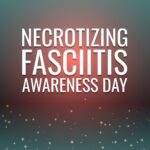National Patient Participation Week, taking place from to , is an annual national event held the first week of June each year. The week aims to raise the profile of patient participation groups that work with the N.H.S. Patient participation groups employ the use of lived experience to influence how patients are treated by General Practitioners (G.Ps) and medical professionals. National Patient Participation Week also promotes the work of the National Association of Patient Participation, which allows for national collaboration of patient participation. Patient participation groups are contractually required, that is, N.H.S. medical centers and G.P. services are required to have a patient participation group and receive patient feedback to influence the way treatment of patients is carried out.
History of National Patient Participation Week
Patient participation was necessitated by medical paternalism. However, unchecked paternalism by a physician can hardly be justified, and more repugnant than that would be unlimited patient autonomy. The process of informed consent is one in which patients make decisions informed by the advice of medical professionals.
In recent years, the term ‘patient participation’ has been used in many different contexts including for instance, in shared decision making, participatory medicine, and patient-centered care. In the U.K., throughout 2016, two new relevant terms have had an expansion of their usage, namely: Patient and Public Involvement, and Patient and Public Involvement Engagement. These two terms have expanded in the sense of public services-related coproduction. Newer information was made available in 2019 after a collection of papers on the research topic was published.
Increased patient participation in health policy can lead to improvements in patient satisfaction, as well as safety and population health outcomes. It can also ensure the incorporation of public health needs into policies. Patients can influence health policy and mutually benefit from collaboration on setting goals and measuring outcomes. By providing feedback in the form of survey responses, patients help with very useful feedback on the perceived quality and accessibility of healthcare services. Additionally, patient satisfaction results from these surveys have become an important metric for evaluating and comparing one another. Relating to participatory medicine, ensuring patients’ representativeness has proven rather difficult. Patient participation is a generic term, and as such, there is no exhaustive list; however, there are subdivisions into several areas where patients and/or their advocates have a role in medical practice.
National Patient Participation Week timeline
The first patient participation group is created by G.Ps.
The National Association for Patient Participation is established.
The Patients’ Rights Act of Scotland is enacted.
A publication titled “Patient and Public Involvement in Health Research” is released in August.
National Patient Participation Week FAQs
What is National Patient Participation Week?
National Patient Participation Week is a national event held each year to raise the profile of patient participation groups working with the N.H.S.
What is the purpose of patient participation?
Patient participation exists to help health professionals receive patient feedback to influence the way treatment of patients is carried out.
Are patients harmed while receiving healthcare?
Yes. One in 10 patients is harmed while receiving healthcare services.
How to Observe National Patient Participation Week
Join a patient participation group
In honor of National Patient Participation Week, simply join a patient participation program near you. Browse the internet to find a program that suits you.
Fill out a medical survey
Contribute to the goals of patient participation by taking the time to fill out medical and public health surveys. They’re easy and you can always ask for help if anything is unclear or confusing.
Donate to the N.A.P.P.
Donate to the National Association for Patient Participation and help them achieve their aims. Any amount helps.
5 Interesting Facts About Patient Safety
10% are harmed while receiving healthcare
One in 10 patients is harmed while receiving healthcare services.
Investment in patient safety saves money
It is more financially prudent to invest in patient safety.
Unsafe medical practices cost billions of dollars
Billions of dollars are lost annually as a result of unsafe medical practices.
Wrong diagnosis is a common practice
The most common practice of medical negligence is improper or late diagnosis.
Hospital infections affect 10% of hospitalized patients
About 10 in 100 hospitalized patients are affected by hospital infections.
Why National Patient Participation Week is Important
It creates awareness about public health practices
National Patient Participation Week creates awareness about public health practices. Spread awareness on patient safety during this week.
We get to participate in policy making
National Patient Participation Week allows us to participate in policy making and decision making. It is important to let your voice be heard during this week.
Collaborative efforts with the N.H.S. can be carried out
It’s an opportunity to collaborate with the N.H.S. to help them serve the community better as far as healthcare is concerned. It’s up to each one of us to improve the standards faced in our community.
National Patient Participation Week dates
| Year | Date | Day |
|---|---|---|
| 2026 | May 31–June 6 | Sunday–Saturday |
| 2027 | May 31–June 6 | Monday–Sunday |
| 2028 | May 31–June 6 | Wednesday–Tuesday |
| 2029 | May 31–June 6 | Thursday–Wednesday |
| 2030 | May 31–June 6 | Friday–Thursday |

















